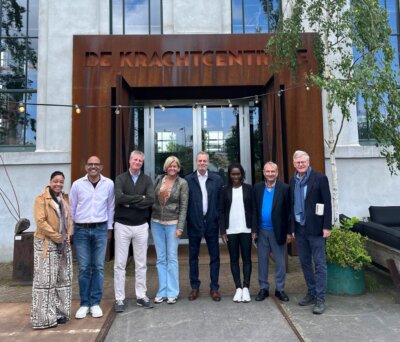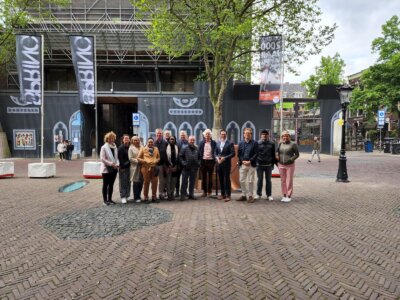 In May the Monumentenzorg Curacao visited the Netherlands. The foundation has over 130 monuments under management, including town houses, forts, plantation houses and even a former synagogue. During their visit they went to various projects and talked to different experts to gain inspiration and knowledge. Lyongo is one of the members of supervisory board of this private foundation and he gives a summary of their visit.
In May the Monumentenzorg Curacao visited the Netherlands. The foundation has over 130 monuments under management, including town houses, forts, plantation houses and even a former synagogue. During their visit they went to various projects and talked to different experts to gain inspiration and knowledge. Lyongo is one of the members of supervisory board of this private foundation and he gives a summary of their visit.
Tuesday
The group started in The Hague with a visit to the Ministry of Education, Culture and Science. The purpose of the meeting was to get acquainted and to explore the possibilities of collaborations. We shared our thoughts on the joint responsibility we think we have for the monuments of Curacao, since they are carriers of our common history.
After a fascinating conversation we boarded their bus to the Monumentenbeurs in Den Bosch. There we followed a lecture about making monuments more sustainable, which is also important in tropical climate of Curacao…
Wednesday
The next day we left as a group by bus to de Krachtcentrale in Huizen. Here we were welcomed by Peter Kos, owner and initiator of this industrial project. He talked about the architectural approach over the last several years and their application to become a monument. The Power Plant now has all kinds of users, from office space to studio. And from gym to restaurant. How they dealt with financial, political and construction matters is very inspirational. It was an interesting story, especially because this is about a completely different type of heritage. After we had seen the entire building from top to bottom, we had a short lunch break in the restaurant.
After our lunch we drove to Naarden-Vesting. There we were warmly welcomed in the historic Utrechtse Poort by Mark van den Bos (director Monumentenbezit), Marlo Reeders (director Nationale Monumentenorgansiatie, short: NMo) and her colleagues. Good to hear how far they have come as collaborative organizations in just five years. We were happy to hear that we can also submit monuments from Curacao for MonumentenPortaal, a platform of the NMo. Mark and Marlo gave us a short tour of and a walk along some of the fortifications they have renovated and given a new purpose. Inspiring to see how this is handled, because Curacao also has defenses that may need a new destination in the future.
The day was not over yet, we made another stop at Buitenplaats Trompenburgh, which is currently in the middle of a large-scale renovation. Interesting to hear from Mark how this works and what their plans are for the building. After that we got on the bus to Utrecht. We stayed in a monumental hotel in Utrecht, where we also received an extensive tour and a lecture about its transformation.
Thursday

On the last day we started our program with a nice cup of coffee with Stichting Nationaal Restauratiefonds (NRF). We discussed how we both approach things and see where we can learn from each other. Then we walk to the DomUnder, where we were welcomed by Theo van Wijk (architect and initiator of the DomUnder). Cool to see how they made it into a public attraction and inspiring to experience the drive and conviction of Theo to make this project a reality
For the last stop on the program we had to take a short bus ride to the Cultural Heritage Agency (RCE) of the Netherlands in Amersfoort. Here we were welcomed by Marjorie Verhoek (head of the NW region). After her introduction , we paid a visit to the library and the RCE archive.
We lay the base for further collaboration with different heritage organizations in The Netherlands and got a lot of impressions during the visit to the Netherlands with our supervisory board of Stichting Monumentenzorg Curacao. Especially gained a lot of inspiration and knowledge that we will certainly use when we are back on the island. Curacao has many interesting buildings, with historical value or future heritage value. It is up to us to protect, renovate and breathe new life into these together with the communities.

